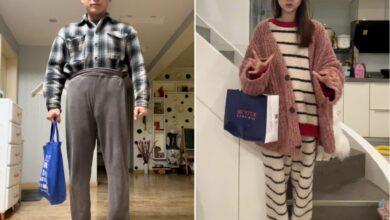Busting the Myth: IIM-A study shows men spend 36% more than women when they shop online
According to the research written by Pankaj Setia, Swanand Deodhar, and Ujjwal Dadhich, 47% of shopped for clothes, 37% for utilities, and 23% for electronics

Males are the greatest online spenders, despite the perception that women should only shop, according to a comprehensive survey conducted by IIM-Ahmedabad. Men spent an average of Rs 2,484 on online buying, which was 36% more than women’s spending of Rs 1,830, according to an online poll that included 35,000 respondents from 25 states. Sunday saw the release of the research “Digital Retail Channels and Consumers: The Indian Perspective” from the Centre for Digital Transformation (CDT) at IIM-A.
According to the research written by Pankaj Setia, Swanand Deodhar, and Ujjwal Dadhich, 47% of men used shop online for buying clothes, 37% for utilities, and 23% for electronics. 58% of women shopped for apparel, 28% for utilities, and 16% for gadgets. Men spend less time buying online, but only slightly. Men spent 34.4 minutes online shopping, whilst women spent 35 minutes.
Online shopping dominates Tier-2 cities compared to Tier-1 cities
Consumers from Tier-2 cities (Jaipur, Lucknow, Nagpur, Kochi, etc.) spent 21% more on electrical devices and 63% more on fashion online than those from Tier-1 cities (Delhi, Mumbai, Chennai, etc.). “In doing exclusive shopping for fashion and clothing products, consumers in Tier- 2 cities have the highest per capita spending. However, a higher proportion of consumers engaging in exclusive shopping are from Tier-3 and Tier-1 cities,” the survey stated.
In comparison, a consumer from a Tier-1 city would have spent Rs 1,119, while customers from Tiers 2, 3, and 4 would have paid Rs 1,870, Rs 1,448 and Rs 2,034 respectively. When purchasing apparel and fashion items, 87% of consumers choose “cash on delivery” as their preferred method of payment.
According to Deodhar, the results make sense when considering the gender differences in purchasing power and median income.
According to the experts, simplicity of use is the second-biggest factor influencing online purchase after value for money. The epidemic, according to Setia, who also serves as the chairperson of CDT, “boosted online shopping after 2020.”
The average expenditure stayed within the Rs 2,000 level, indicating a prevalence of thrifty shopping habits. As a result, the survey calls into question long-held beliefs about gender and consumer behaviour, emphasising the changing dynamics of how people shop in the digital age.
You might also be interested in – “Hot Parents have Rich Kids?”: Study Reveals Surprising Link Between Attractiveness and Offspring’s Income



